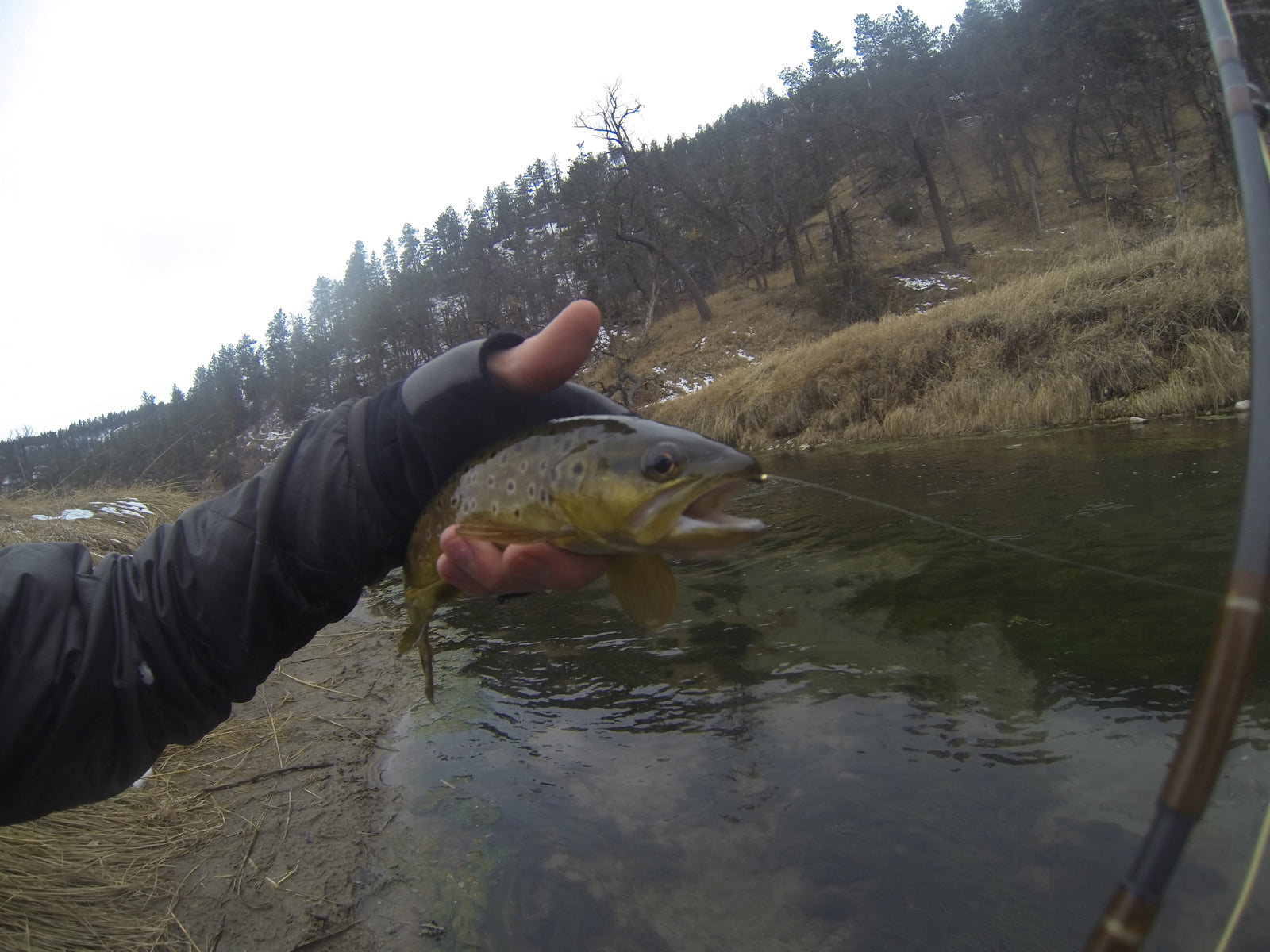Fishing Report / Spring Dry Fly Fishing 101

Ryan Gabert |
The dry fly fishing the past week has been good. Real good. Like call in sick to work and go fish instead good. Everywhere from Sand Creek to Rapid Creek has been fishing well, with the fish looking up. Hans and I kicked around town looking for some risers earlier this week, and found plenty of fish that were heavily feeding on BWO's with a few midges scattered in with them. The fish aren't pushovers, but if you watch your technique and equipment, you can catch fish consistently on dries for a good portion of the day! Here's a few pointers that could help you catch a few more tricky fish.
Tippet
In my opinion, this is quite possibly the most important part of your whole fishing equation while fishing dries to reasonably picky fish, especially small flies. RIO Suppleflex is exactly what it's name states - more supple than your average tippet, which when coupled with a longer than normal tippet length and dry flies, gives you a longer, more realistic drift, and this translates into more fish in your net! 6x is my standard go-to size for any dry flies smaller than 16 or so, and I have found fish to take the flies with a lot more confidence than if you were fishing a heavier tippet. Your tippet is a very important part of how you fish, so don't skimp on it
Flies
This is where everyone get super worked up about what the "hot fly" pattern is. Truthfully, I believe that your setup, leader, tippet, and presentation are the more important part, but the fly still matters. It is what catches the fish, after all. That being said, I've been doing well on a myriad of patterns, including but not limited to; CDC Thorax Duns, Eric's Midges, Brooks Sprout Emergers, Parachute Adams and BWO's, Comparaduns, Sparkle Duns, Morgan's Midges, as well as a few homebrew patterns. My best sizes have been an 18 or 20, but some days the fish are willing to eat a 16 or even a 14. I've caught a fair number of fish on size 14 Klinkhamers. Feel them out, and don't be afraid to try something different.
Floatant!
There's nothing more frustrating than being there during a great hatch, with fish rising all around you, and you can't make your flies float. Which means you don't catch fish, when everyone else is probably wailing on them. Save up your pennies and buy a tube of Tiemco Dry Magic. This is the Cadillac of fly floatant. It works on everything, including CDC. It lasts FOREVER, I've been using the same tube of mine for well over a year now. It makes your flies float like a bass popper, and it's temperature stable, meaning that you won't ever open the tube and have it all ooze all over your shirt, pack, and fly box. It's the best floatant I've ever used, and it's well worth it.
Desiccant
Having the proper fly desiccant is more important than you think! After fishing your fly for awhile, they get very waterlogged, and often slimed up by fish. This leads to the fly sinking, which leads to you not being able to see it, and therefore not catching any fish, which sucks. Here's the solution! Have a good container of desiccant with you. When your fly starts sinking, drop it in, shake it, blow the residue off it, reapply floatant, and your fly is as good as new and floatin' like a red and white bobber. It saves you from having to change flies so often also, because you can keep using the same one, rather than changing to a dry one after every few fish.
Hopefully these tips help you catch a few more fish, I know they've helped me put more fish in the net! Get out this week and get a few!
Ryan



